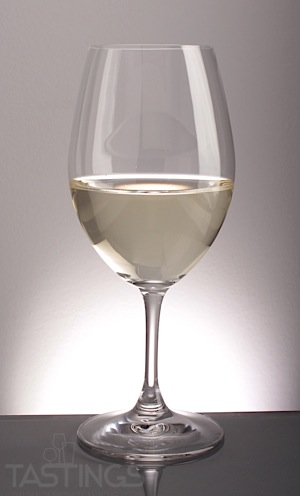Other South African White

Serve in a White Wine Glass
White wine is produced in slightly higher numbers in South Africa as opposed to red wines (55% to 45%). The leading white wine is Chenin Blanc, which is produced in a dry to off-dry style with good natural acidity and very good depth of fruit. Chardonnay is next, followed by Sauvignon Blanc; examples of the latter, especially from Stellenbosch in the Coastal Region, have received notable critical praise.
Other whites, produced in smaller quantities, include Viognier, Colombard, Grenache Blanc and Weisser Riesling (Rhine Riesling). Examples of these wines are generally rather light and meant for early consumption; Weisser Riesling has shown some promise.
Though thought of as distinctly New World, South Africa's wine industry is actually over 300 years old. With recent governmental changes, South Africa has left its long period of international isolation. Wine drinkers in the US are beginning to see more and more of the fabled "Cape" wines on the domestic market. These wines actually share more in common with Old World styles than with their New World counterparts.
Produced in a cooler climate with a distinct maritime influence, South African wines are generally a couple of degrees lower in alcohol than those from Australia or California, and have higher levels of acidity with relatively firm structures. All in all, the national style shares much in common with that of France. Balance and moderation are the buzzwords, making these wines exceptionally friendly at the table. South African wines do have some unique signatures, however. Fans note a distinctive minerally flavor, present particularly in the reds, that we usually described as tar-like.